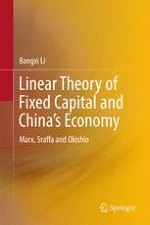2017 | OriginalPaper | Buchkapitel
7. Fixed Capital and China’s Economy 1995–2000
verfasst von : Bangxi Li
Erschienen in: Linear Theory of Fixed Capital and China’s Economy
Verlag: Springer Singapore
Aktivieren Sie unsere intelligente Suche, um passende Fachinhalte oder Patente zu finden.
Wählen Sie Textabschnitte aus um mit Künstlicher Intelligenz passenden Patente zu finden. powered by
Markieren Sie Textabschnitte, um KI-gestützt weitere passende Inhalte zu finden. powered by
